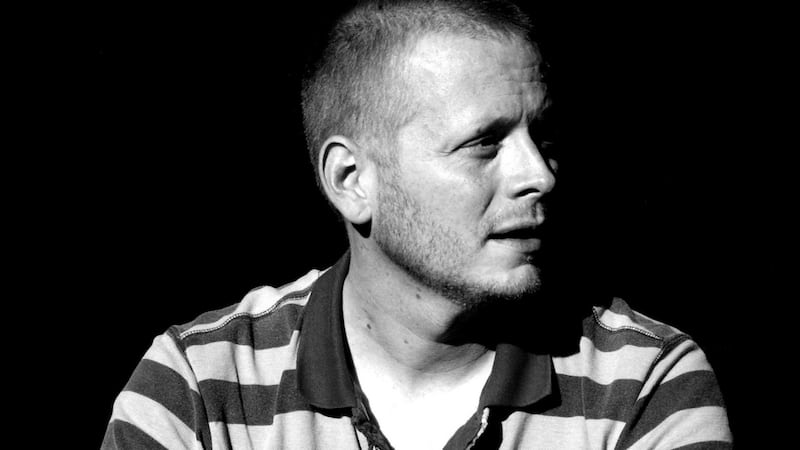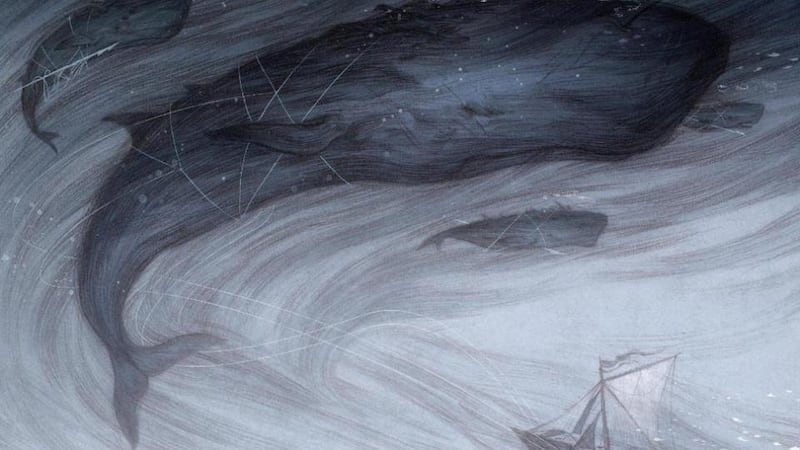“The best thing to know about Bailey is when to leave. And that time is now, when you’re still able to.” In this Irish small town, much like Stephen King’s Derry, Maine, dreadful things happen that no one quite wants to acknowledge out loud. The “skin” separating two worlds – the rational and the supernatural – is thin here, and the “brown, restless” river that flows through Bailey calls its inhabitants to it at regular intervals.
For three teenagers who have lost family members to the river and see the darkness lurking beneath – an unsettling evil that manifests in showers turned bloody and false images of loved ones – it’s time to fight back.
Tina Callaghan's debut horror novel for teens, Dark Wood Dark Water (Poolbeg, €8.99) prioritises action over thoughtful characterisation, which is sometimes frustrating – one character, in particular, is defined entirely by her weight and jealousy; another has an aching loneliness that cries out for further exploration.
At the same time, that action is plentiful and there’s an intriguing shadow cast by the “impossible memories” of a long-ago ship, its captain, and an act of treachery.
S.K. Wright's It Ends With You (Atom, £7.99) delves into the more mundane horror of how outsiders are treated, and how easy it is to be "always in the wrong place at the wrong time" when the authorities are looking for someone to blame. Scholarship kid Luke is the one the police zoom in on when his girlfriend disappears, while his posh mate Rob (who has his future "all mapped out, and if you think I'm crazy to decide all this at the age of 17, then remember: Maggie Thatcher went to Oxford knowing that she was destined to be PM, and look how far she went") has just as much to hide.
Told from several viewpoints, including blog posts and private messages, the narrative tantalisingly uncovers what happened in the days leading up to Eva’s disappearance, while moving forward with the discovery of her body (“I find out that the love of my life is dead via Facebook,” Luke says bleakly) and the corrupt investigation into the murder. The social commentary, though on point, never overwhelms the engaging, page-turning plot.
Kody Keplinger's That's Not What Happened (Hodder Children's Books, £7.99) examines what happens after a tragedy, particularly once the reporters leave and the survivors are left "sorting through the rubble". It's been three years since Leeanne's best friend, Sarah, was killed in a school shooting, since Leeanne has realised that death "wasn't necessarily a far-off threat . . . a curtain had been pulled back and I could now see the hideous truth of mortality".
Keplinger’s psychological insights are shrewd, not just in relation to Leeanne’s existential crisis but also in her depiction of the media obsession with tragedy. Apart from the expected true crime devotees, there’s also “a weird fandom” (including romance stories featuring the victims) that’s emerged about that day, in which “the mass murderer is glorified, portrayed as misunderstood and sympathetic, and the rest of us were just bullies”.
I'm in trouble here. This is how girls end up at their boyfriend's football matches, or pretending they love Formula One more than Netflix
It’s an unsettling read, not least because of how utterly authentic it feels. As Leeanne tries to piece together the truth, she encounters far too many people who prefer a good story – including resistance from her fellow survivors, whose truths they’d rather keep hidden. Gripping and thought-provoking.
“I’m in trouble here. This is how girls end up at their boyfriend’s football matches, or pretending they love Formula One more than Netflix.” Nell is smart enough to see what’s happening when she meets the intense, handsome, and troubled Lukas, but what does cleverness have to do with what the heart wants?
Lucy van Smit's The Hurting (Chicken House, £7.99) invites us into the atmospheric world of Norwegian fjords and mountains, a beautiful wilderness that the raised-by-wolves Lukas thinks of as home, urging Nell to follow suit.
With her family life less than ideal – her father is an alcoholic who “prays to God, but his money’s on the Devil”; her sister’s cancer “trumps everything”; her mother abandoned them years ago – Nell finds the allure of running away and creating a new family with Lukas and his baby brother too much to resist, even though the warning signs are there.
Nell’s capacity to recognise the potential dangers while also yearning to be with this charismatic boy makes this taut thriller completely believable. She’s a compelling heroine from a writer to watch.
The award-winning Patrick Ness returns with a reimagining of Moby Dick, And The Ocean Was Our Sky (Walker Books, £12.99), echoing the mode of his previous novel, Release, which used Mrs Dalloway as a jumping-off point. Ness's imaginative capacity draws us into a universe where men and whales hunt one another, where both are civilised even as both are constantly at war, where the upside-down world of the sea makes our normal – presented here as "the Abyss" – topsy-turvy.


Bathsheba, a Third Apprentice to the legendary Captain Alexandra, tells her story: of the hunt, of the hatred of men with “their bloody killings, their sloppy, wasteful harvesting”, of the encounter with Toby Wick and his “great white ship”, a monstrous figure they must seek out and destroy. She begs her listeners – and readers – to learn from the tale she has kept hidden for so many years: “Take my name as the warning of where our fears will lead us, where the devils we make will destroy us all.”
This is an elegant novella with a mythic feel, beautifully illustrated by Rovina Cai, whose black-and-white (with the occasional striking, powerful splash of red) drawings capture the dreamy sense of this world, even as its preoccupation with power reflects our own. Another modern classic from Ness.
Claire Hennessy is a writer and YA commentator.






















